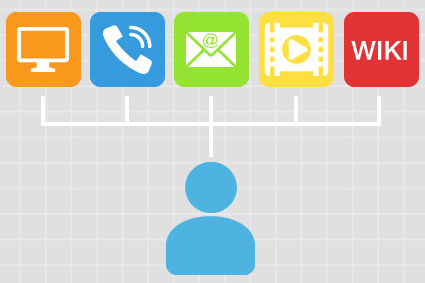Embedded wiki content and training videos along with effective customer self-service are critical elements to developing a positive, powerful customer experience. For identity and access management, it is a critical point of competitive differentiation for today’s businesses. Besides the known and widely discussed value of lowering support costs, what is the true value of self-service for a business? What are the overall implications when you execute an effective customer self-service identity management strategy?
Here are three valuable benefits and business outcomes driven by a self-service identity management solution:
Customer empowerment means lower churn and higher conversions
Customers increasingly prefer self-service over assisted-service channels. Self-service identity management allows users to help themselves wherever and whenever they want. Rather than requiring users to pick up the phone or even travel to a business location to see a representative, self-service offers real time fulfillment. Website self-service has the potential to make customers feel empowered, capable, confident, and able to proceed with business operations.
When customers are able to get instant, relevant answers to their questions, they are less likely to abandon and more likely to purchase! It’s the perfect recipe for building loyalty, ensuring repeat customers and gaining higher conversions.
Lower support costs means increased efficiency for support agents
When self-service is properly implemented, it effectively educates customers to deflect support tickets. As a result, companies lower their recurring costs by offering self-service operations, because website and mobile self-service free up your customer service teams. This is especially true when questions are answered one-time only and the Q&A is added to the online help for all future visitors to find. By not answering the same questions over and over, customer service agents are freed to focus on more meaningful, high-value customer engagements.
Higher engagement means stronger insights into customer behavior
Most self-service technologies today are grossly underutilized not because of a content-problem, but rather from an experience problem. Research shows on average 0.1% of users actually click on the "Help" link on a website or web app. In comparison, 5% to 15% of users click a FAQ or Wiki tab to get instant self-service answers at the point-of-action. That’s 50 to 150 times more usage than a "help" link. It’s also gives 50 to 150 times more insight into what your visitors actually experience issues with and why.
These insight come from analyzing the traffic to pages customers read on your FAQ and Wiki. Is most of the new questions coming from a particular page or area of your site? User feedback lets you know whether answers are helpful. In determining the answers to such questions, you can improve your user experience and make meaningful changes to your product.
As the customer experience evolves, customer service shifts from a cost-center to a profit center with self-service leading the way!
Get the Top 10 Identity Manager Migration Best Practices Workbook
 Start your migration from legacy software with the Top 10 Identity Manager Migration Best Practices Workbook. Use this workbook to think through your information security risk before you transition to next generation identity manager software.
Start your migration from legacy software with the Top 10 Identity Manager Migration Best Practices Workbook. Use this workbook to think through your information security risk before you transition to next generation identity manager software.




